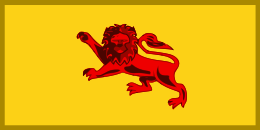| Governor of North Borneo | |
|---|---|
| Style | His Excellency |
| Residence | Sandakan (before 1946), Kota Kinabalu (1946–1963) |
| Inaugural holder | William Hood Treacher |
| Formation | 1881 |
| Final holder | William Allmond Codrington Goode |
| Abolished | 1963 |
The Governor of North Borneo was the appointed head of the government of North Borneo.
Originally the Governor was appointed by the North Borneo Chartered Company, which was responsible for the administration of the protectorate. Upon North Borneo becoming a Crown colony in 1946, in the aftermath of the Second World War, the Governor of British North Borneo became an appointee of the Crown (i.e. of the Government of the United Kingdom).




















